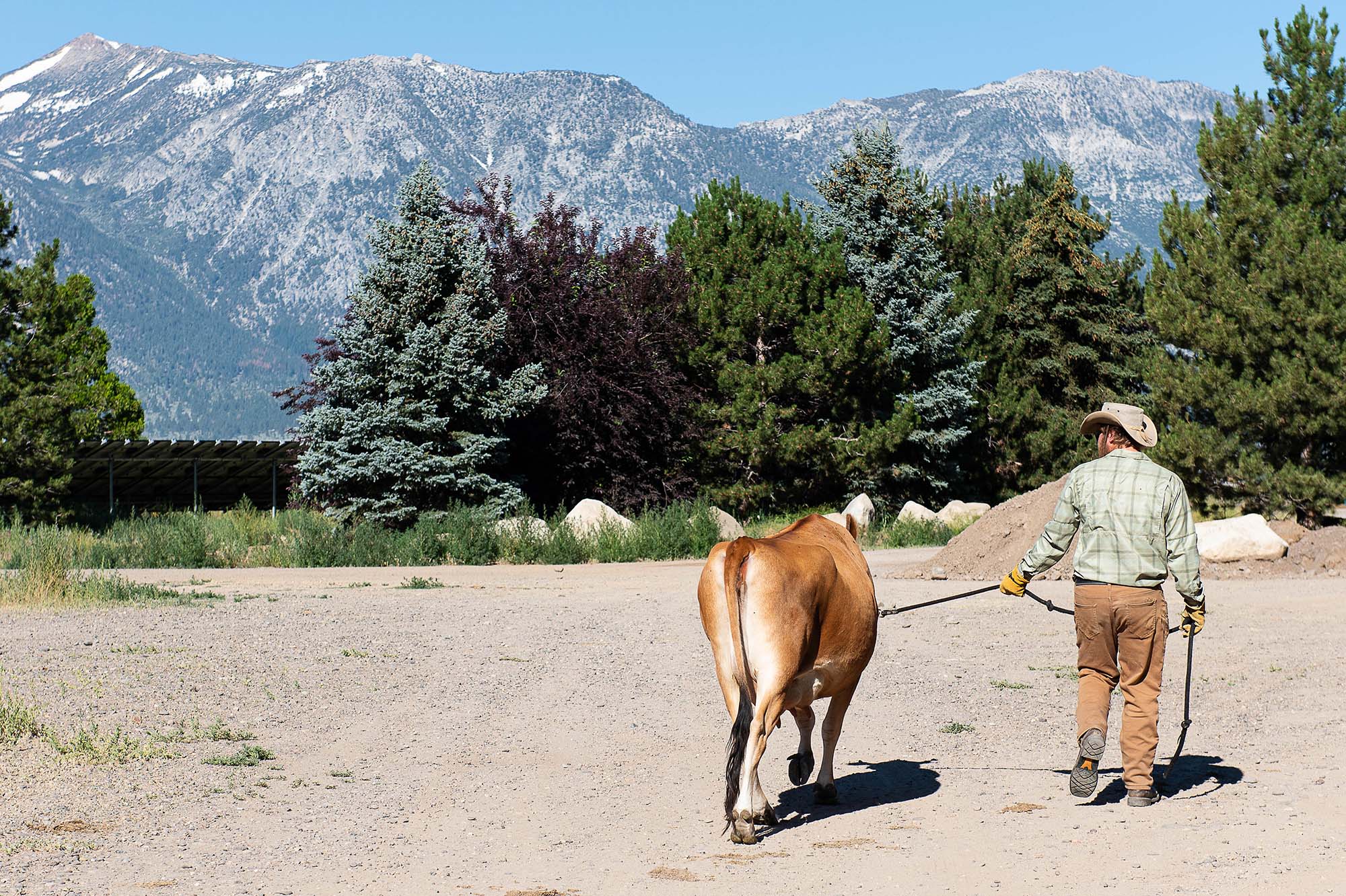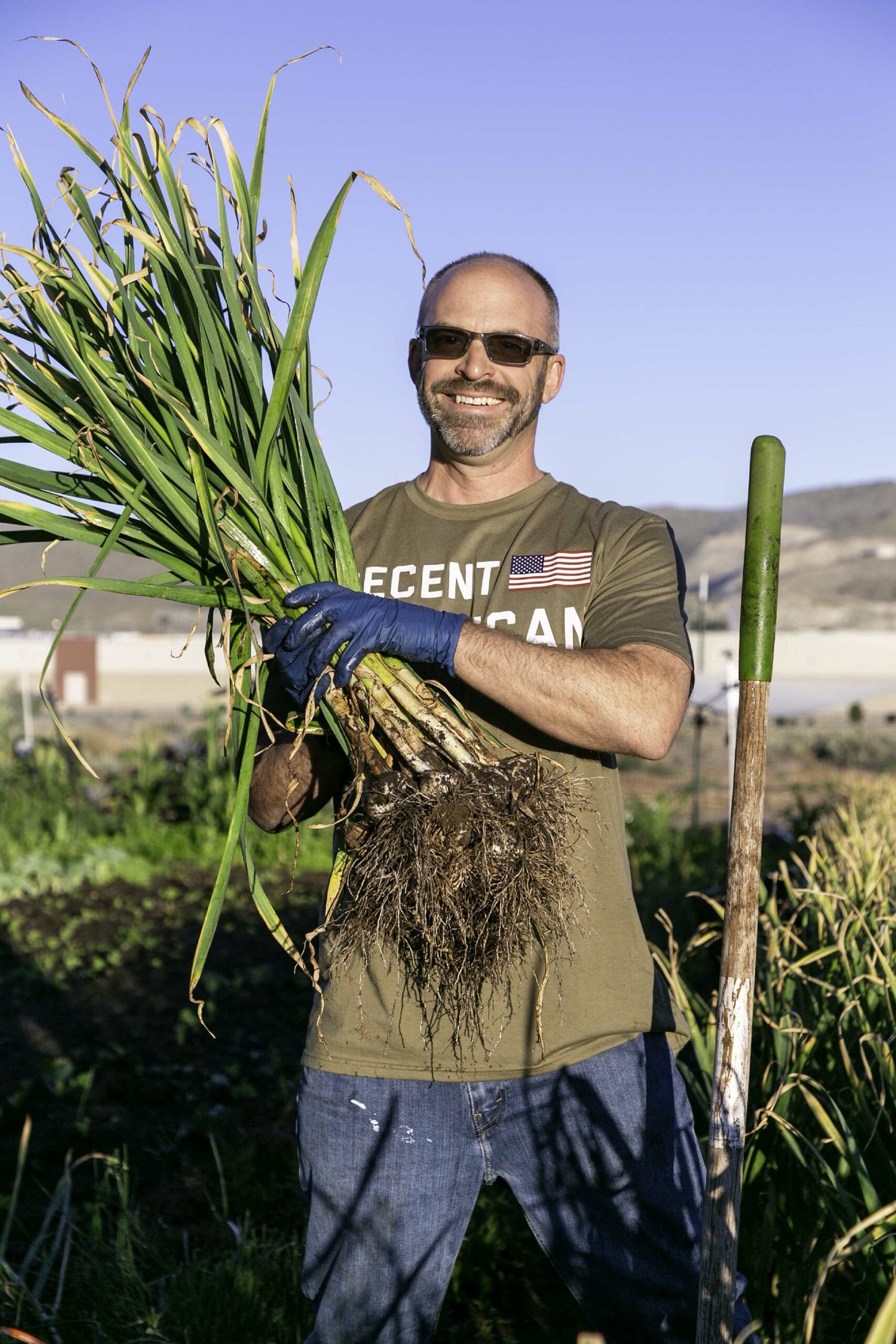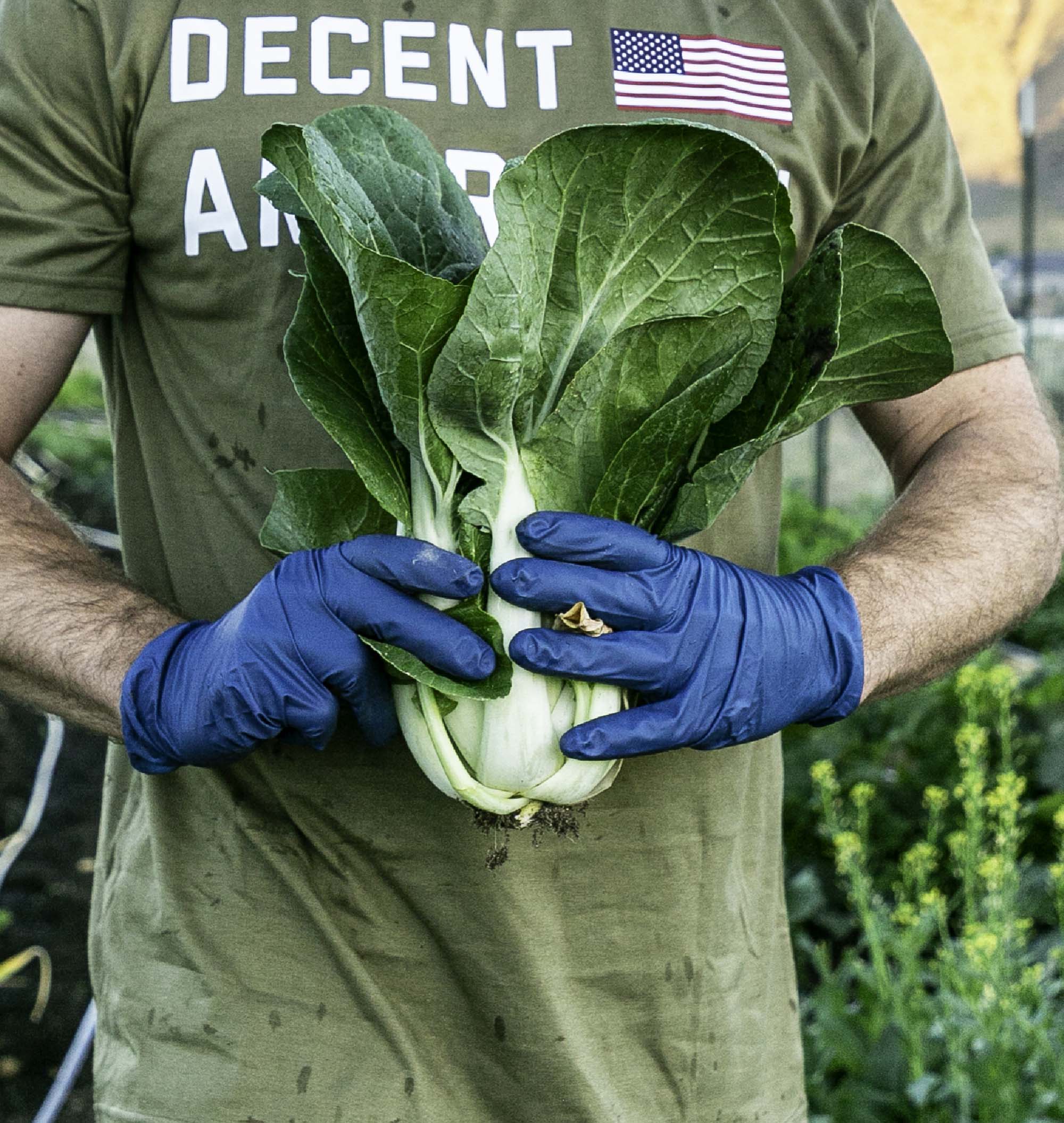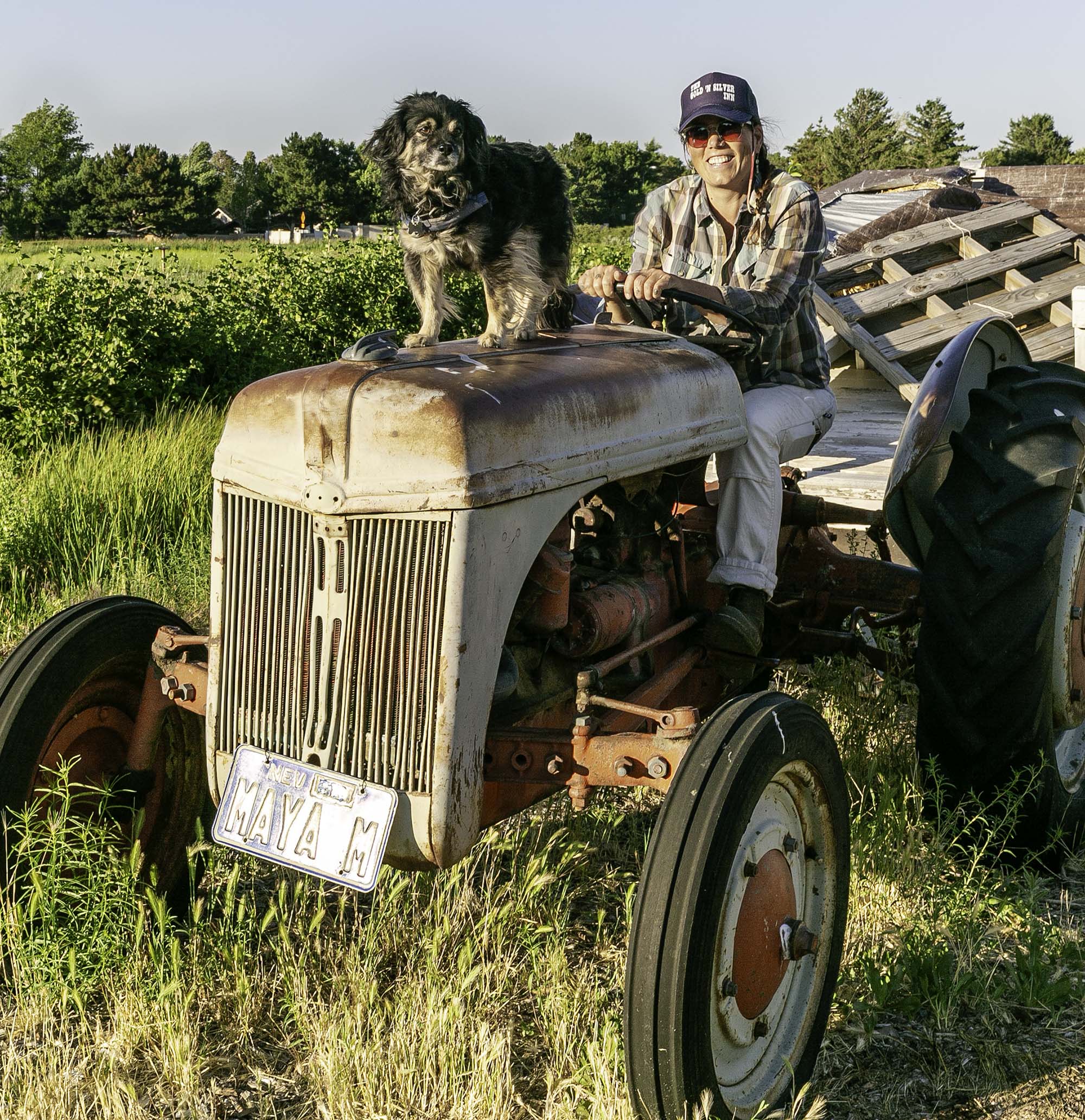A look at the challenges and triumphs of growing food in Reno-Tahoe.
Farmers and ranchers face abundant challenges within their industry.
According to the U.S. Department of Agriculture’s 2022 Census of Agriculture, the most recent one available, 8.7 percent of The Silver State is farmland, home to more than 3,300 farm operations. While dealing with weather can be the biggest challenge for many farmers and ranchers in Northern Nevada, the bureaucratic and financial obstacles are similarly challenging, no matter the size of the operation, in an already demanding, 24/7 business.
Structural permitting, water rights, business license acquisition, zoning, and allowable land usage, plus the application processes … they don’t differ, whether the property is grandiose or just getting going.
And many farmers and ranchers also want to retire eventually.
Soon, who will grow our food in the face of myriad uphill battles?
Exploring the Challenges
In the December 2022 newsletter from Reno’s Great Basin Community Food Co-op, co-founder and co-general manager Amber Sallaberry wrote, “I’m heading into my 18th year since we started our food co-op, and in that time, I’ve watched dozens and dozens of local producers come and go. I’ve sat and listened as folks break down in tears after fighting a food system that doesn’t want them involved — a system that favors the big factory farms and massive ag conglomerates with everything from subsidies to legislation.
“These major food and ag corporations,” she continued, “are the ones killing the soil microbes, and creating toxic rivers and lakes … They are the reason that we have so many food processing laws … Because of this, small-scale producers are regulated to death … and expected to conform to the same guidelines as processing facilities who are doing 200,000 times the business. A lot of these guidelines are not even financially feasible for our small-scale, family-owned operations.”
Produce is considered processed when altered from its natural state during preparation, by means such as freezing, drying, baking, or simply washing. If farmers are not processing their produce, then they need only obtain producer permits from the Nevada Department of Agriculture. However, if their produce is processed in any way, then additional permitting from the health department must take place, especially if those products will be sold at local farmers’ markets or other commercial operations.
While each Nevada county has its own respective priorities, currently, in Washoe County, the development code available for viewing online breaks down county land into 18 regulatory zones for allowable uses, such as “low-density rural,” “high-density urban,” and “general commercial.” Some areas are permitted for agricultural use either by rights or by getting a special use permit through the county.
As Trevor Lloyd, planning manager for the Washoe County Community Services Department’s planning and building division, explains, “Specifically, agricultural sales and produce sales are permitted in all rural, rural residential, and low-density suburban regulatory zones, with the approval of a special use permit. Also, crop production is allowed by right in those same regulatory zones. These agricultural use types are not allowed in the urban and higher-density suburban regulatory zones.”
Should land be deemed acceptable for agricultural use, and the farmer wish to sell their farm-grown fare to consumers, another level of county permitting is required. Additionally, building permits must be acquired for structures often required for farming, such as year-round growing tunnels or storage facilities.
For farming and selling foods, the permitting procedure through the county is this: If it’s edible but unprocessed, a producer certificate is needed; if it’s acidified, such as pickled items, a craft foods permit is required. A cottage-foods license must be obtained if the producer is making jams and jellies, granolas, nut mixes, dried fruits, or baked goods, for example, while a farmer who is cutting and packaging produce must register as a food-processing facility with the U.S. Food & Drug Administration.
We spoke with working farmers, many of whom say there are distinct differences in the permitting processes between the more populated counties and those considered more rural, such as Douglas and Lyon. Some counties’ master plans, such as Washoe’s, are more focused on residences and commercial use than on growing food. And that means farmers have a lot of hoops to jump through.

Helping Farmers Through the Hoops
For those interested in the business of agriculture, Staci Emm, professor and county educator at the University of Nevada, Reno’s College of Agriculture, Biotechnology and Natural Resources extension program, is dedicated to helping them thrive in the industry.
The extension offers a beginning farmer and rancher certification program each spring to help folks entering the field. Emm says that we’re all interested in where our food comes from, and we want it to be nutrient rich and healthy. Many people are beginning to farm to ensure these elements for their family, yet it’s a dynamic field with many moving parts, plus extensive infrastructure and permitting requirements must be met before their products can ever reach consumers.
One way to lessen the challenges for future farmers might be encouraging consumers to speak with their dollars, Emm says.
Increasingly, consumers are looking for farm-fresh food grown close to home. Consumer preferences can inspire lawmakers to explore ways of streamlining the permitting processes for those who grow our foods — for instance, creating a single stop for permitting based on all farmers’ needs as they bring products to market, versus requiring them to apply with multiple county agencies and navigate what’s often considered by farmers to be excessive approval timelines for vital structures to be built.
“[We need to be] identifying our consumer preference and building those processing and distribution chains for producers to access where the consumer preference is,” Emm says.
Currently, regulatory compliance heavily affects small-scale farmers and ranchers. Nevada currently has just a handful of meat-processing plants, so getting beef and other meats from ranchers to buyers can be cost prohibitive. Counties each have specific zoning requirements — with planning commissions in urbanized counties often seemingly more focused on dwellings than food production — plus the land must have water rights.
Emm is concerned about the balancing act between urban sprawl and finding land on which to grow our food … with good reason.
Sprawl Versus Sustenance
Brian Markowski dreamed of starting a farm after his years of military service. In 2020, the disabled veteran purchased 10 acres of Spanish Springs land, where he wanted to grow berries and vegetables.

After doing his own due diligence on farming factors for his land, such as confirming water rights, zoning restrictions, and allowable usage (how he may utilize or develop the land) prior to planting, Markowski was told in writing by someone at the Washoe County Planning and Building Division that his land was indeed zoned for commercial crop production.
He spent three years readying his land for production, securing financial assistance for veteran and USDA grants, and investing about $50,000 in his dream. He’d even lined up tours for schoolchildren.
Once he was fully ready to move forward, Markowski contacted the county again and was told by an official that the first county contact had made a mistake; Markowski’s land actually was not zoned for production farming. Oops.
He fought as hard as he could. He had the email stating his land was ready to farm.

The county didn’t budge. It was an unfortunate mistake for which Markowski would suffer the consequences. He received an apology for the flub, but no flexibility.
“It’s ruined my life,” Markowski says. “I should be in my third year of production right now and have seven acres of production. I should be looking out my window at rows of berries and be part of the community giving tours. That’s where I should be with how much work and hours I’ve put in.”
He could apply for rezoning but believes the likelihood of getting approval isn’t worth another battle. Behind his land, 700 razed acres are ready for development, but not the agricultural kind.
With the restrictions placed on him, Markowski only is allowed to grow a certain amount of vegetables and berries for personal use. He can then sell anything considered surplus at local farmers’ markets.
But he’s going to sell his current land and head to what he considers a more agriculture-friendly county because, to him, a disabled veteran, farming is more than just a means to feed his family; it brings him peace.
“There’s a biological side when you’re in the soil — the dirt your hands are in, that your kids are playing in, with all the micro-organisms — [it has] an effect on your immune system way more than I can explain. And physically … I can’t work a 9-to-5 job. It takes me two hours to get ready every day, so farming gives me the freedom to work at my own schedule. I can go out there if I’m disabled and not feel like I’m being looked at or treated differently.”
In another part of Washoe County, Bodie Monroe and his family started Bridge 33 Farm in September 2022, on five acres of land in Steamboat, where he grew up. After years at a desk job, Monroe wanted to see if he could make the generational land profitable and act on his fixation on farming. The pandemic had also left him feeling food insecure, and he never wanted to feel that way again.
The Monroe family installed several large tunnels for year-round growing and faced similar obstacles as Markowski and others entering the field.
The family needed a business license to sell vegetables from its farm, which was challenging, as the process is “not geared toward working with farmers,” Monroe says. He says he and his family could grow their crops, but selling them would require a separate business license from another county department.
The “bureaucratic mess” in starting the business was an “utter waste of time,” Monroe says, explaining that the fire department came out for an inspection twice, the second time commenting to him with a chuckle, “Need us to sign off that your vegetables aren’t going to catch fire, again?”
Monroe, who brought his dream of farming to fruition against the odds, suggests that county officials streamline the process so people who are new to the permitting regulations of growing food for income don’t have to go through multiple individuals and departments at the county level, which can cause confusion and delays for farmers.
After obtaining several building and food-producing permits, the Monroe family began selling produce at area farmers’ markets this year, as well as CSA boxes for individuals and restaurants, and are excited to enter the industry.
Functional Farming
Wild Harmony Ranch began in a Stanford medical center hallway after Nik Noomen was told that his girlfriend (now wife), Alexandra, had mere months to live due to a mysterious autoimmune condition that baffled many medical professionals. Her illness motivated them to try using food as medicine instead of the prescribed pharmaceuticals that frequently left Alexandra incapacitated with their lethargic effects.

“We tried all the ’etarians,” Nik says, explaining that they began eating organic foods tied to the diets of vegetarians, fruitarians, pescatarians, etc., but Alexandra’s test results weren’t improving. Further research revealed that even if it was organic, the produce grown on large, industrial farms often is largely depleted of nutritional value. So they began growing their own in 2019 after purchasing 115 acres in Gardnerville, on which they’re now “cultivating an ecosystem,” not just producing food and raising livestock.
But the permitting process affected them adversely. They needed a Quonset hut to protect their animals’ hay through the harsh winters. Unfortunately, after months of waiting for county permit approval to build the shed, the intense winter had destroyed their hay.
The Noomens believe it’s seemingly easy to get permits for homes, but when it came to building a simple structure to protect their livelihood, they spent too long in limbo.
Today, after facing many struggles, the Noomens call themselves ethical ecologists, not just farmers. Years later, Alexandra still is beating the odds and sharing her newfound, food-based-healing knowledge with others.
Comeback Story
Farming is in the Holleys’ blood. Rob Holley and his family had long worked a Lyon County farm that had been passed down for generations. After a death in the family requiring payment of hefty estate taxes and losing part of their family workforce to college and the pursuits of dreams of their own, the Holleys had to downsize to a much smaller parcel nearby.
Moving Holley Family Farms just five miles took 250 massive loads, something Holley said he’d never do again. He’d just sell and replace it all.
Holley knew the new land would support their vegetable production and provide pasture for some of his livestock, but getting it to a place of self-sufficiency, the state of his previous farm operation, would take years. Holley also needed to lease more acreage elsewhere for his cows.
Friends at Prema Farm, in North Reno, and others helped plant the Holleys’ first fields, while Rob; his wife, Loni; and their son, Daniel, learned how to maximize the efficiencies of the new land, as well as understand the soil and water there.
Holley says they’re thankfully rooted in a community in Lyon County that still values agriculture and feels little pressure from urbanization currently.
Key for Holley is “our ability to continue navigating this changing climate. People like the pastoral image of agriculture, but they don’t like the noise … the dust when you’re working in the dirt, getting ready to plant something. They like the way it looks but don’t like the reality of the daily grind.”
In other counties, development is eating the agriculture, he says. The Holleys have opted not to sell their products at farmers’ markets in counties such as Washoe, as there are too many bureaucratic entities within the county that have a say in what you do. The permitting process is more extensive there.
To help protect the farming and ranching industry, he suggests talking to legal counsel about estate planning. Proper planning can protect farmers’ land for future generations, preventing it from being used or developed for purposes other than agricultural.
For-profit Versus Nonprofit
Lyndsey Langsdale of Reno Food Systems experiences farming from the nonprofit side. RFS is largely immune from the financial barriers that for-profit farms face.
When adversity arises, such as crop-damaging hailstorms or freezing temperatures in June, it doesn’t affect a nonprofit’s bottom line as it does for those reliant upon their crops for income.

She explains that selling at farmers’ markets can be cost prohibitive for many in the agriculture industry, based on transportation costs and labor, and it may not be worth the time or effort if they make just $200 a day.
RFS teaches people how to farm and offers tours so those interested in agriculture can see the five-acre regenerative operation in action. The team also tries to inspire Washoe County officials to be proactive by growing on unused land.
“The future of farming is more urban, small-scale operations like ours,” Langsdale says. “We want to be able to offer this as a place where people can feel that we have a future, where young people can come and observe adults doing something to make a difference in the world. We’re starting to recognize the benefits of a farm go beyond what we produce and distribute from it.”

Future of Farming
Prema Farm owners Zach Cannady and Kasey Crispin have made a successful business of farming, but it wasn’t easy.
“There are a lot of young people interested in farming, but the most daunting barriers to them pursuing it as a career are mainly financial. The cost of land has risen, and even the retiring farmers who likely bought their land for affordable rates are listing their operations at market value,” Crispin says. “The risks of farming alone are high enough without being more than a million dollars in debt just to acquire some rural farmland and humble buildings.
“The other challenge younger farmers face is whether the market can bear the cost of increasingly expensive farming operations — due to the higher cost to acquire farms and the increased costs of growing food sustainably,” she says.
Cannady and Crispin know of the challenges firsthand but have advice for those considering farming as a career.
“We always tell people interested in farming to volunteer or intern with a farm in the region they’re interested in farming [in] themselves. A lot of people have romanticized ideas about farming, and it only takes one season doing the work to dissolve any illusions,” Cannady says. “As city kids ourselves, we learned to farm online, and while that was very helpful, we made many costly mistakes as we tried to apply that general knowledge to our unique high desert climate. Finding a local mentor to help avoid those costly mistakes is always a great idea.”
Another idea presented by the Noomens for anyone interested in agriculture is to find a farmer in the area seeking to retire who has matching land ideals and have them mentor you. Perhaps present the option of working the land, then having the farmer deed the property to you, or purchase the property over a period of years to accomplish goals for all involved.
Locally, many working in the industry remain hopeful and inspired. The Great Basin Community Food Co-op reported in its February 2023 newsletter that 17 Northern Nevada farmers and ranchers closed their operations and five more were experiencing crop losses or transitioning to new owners. But, thankfully, 16 new farmers and ranchers, including the Holleys’ new operation, were joining the local food growing scene.
Ultimately, the more interested consumers are in what they eat and where it comes from, the more our small farms are vitally needed. The future of farming may eventually lie in small-scale, urban farms run by individuals.
But in any scenario, our healthy future relies on farming. We are lucky to have people in our agricultural community who have patience, fortitude, and a lingering passion for the land and for the foods we eat.
RESOURCES
University of Nevada, Reno Beginning Farmers & Ranchers Herds & Harvest Program
Extension.unr.edu/beginning-farmers-ranchers/default.aspx
USDA Small and Mid-Sized Farmer Resources
Usda.gov/topics/farming/resources-small-and-mid-sized-farmers
Washoe County Development Code Division Three: Regulation of Uses
Washoecounty.gov/csd/planning_and_development/code_enforcement/files_forms_reports_manuals/dev_code/_Cdc300_annotated.pdf


